If you need a break from politics, here’s a fluffy video where I plant garlic, harvest carrots, the sun shines, and a dog gets a treat. I struggled a lot to make this video, so there is a non-fluffy version in addition with some real-talk about the current situation. This is not it. This one is all sunshine.
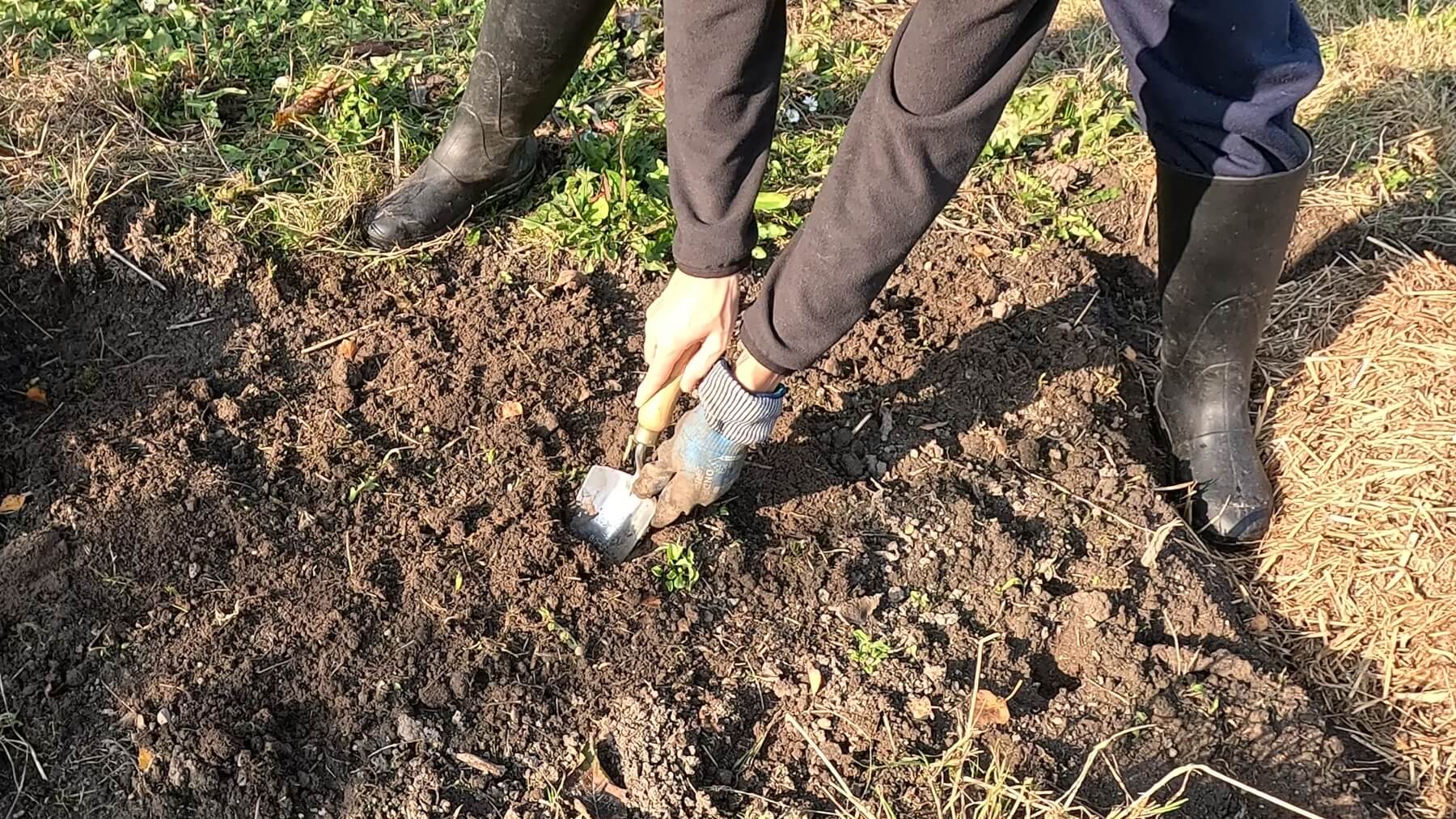
Some sunny days at the end of October warmed me during planting and harvesting. Most of the garlic and onion beds had been made. Most of the harvests were preserved.
The area I’d chosen for the allium beds, so the garlic and onion, had been dandelion central before. My rabbit-owning neighbor had used it to harvest feed for his little fluffies.
I’d planted this bed with field beans only days before, and they were poking through everywhere. Carefully, I removed the dandelion roots. I should have kept them to try dandelion root coffee but that idea hit me too late for these particular roots.
Dandelions are great plants with many uses but they are also prolific, so I try to keep them in check inside the beds.
The roots went to the compost where they join the ever-growing pile waiting to be turned. As I write this, I still haven’t dealt with the compost, as I am down with the period flu and severely lacking light. The sun hasn’t been seen in a week now. Perpetual twilight destroys any sense of time more than changing the clocks did.
We’d harvested some of our indoor plants, but we could not reuse the soil indoors. We’d struggled with aphids, thrips, spider mites, and fungus gnats on this batch. Indoors, there are no predators.
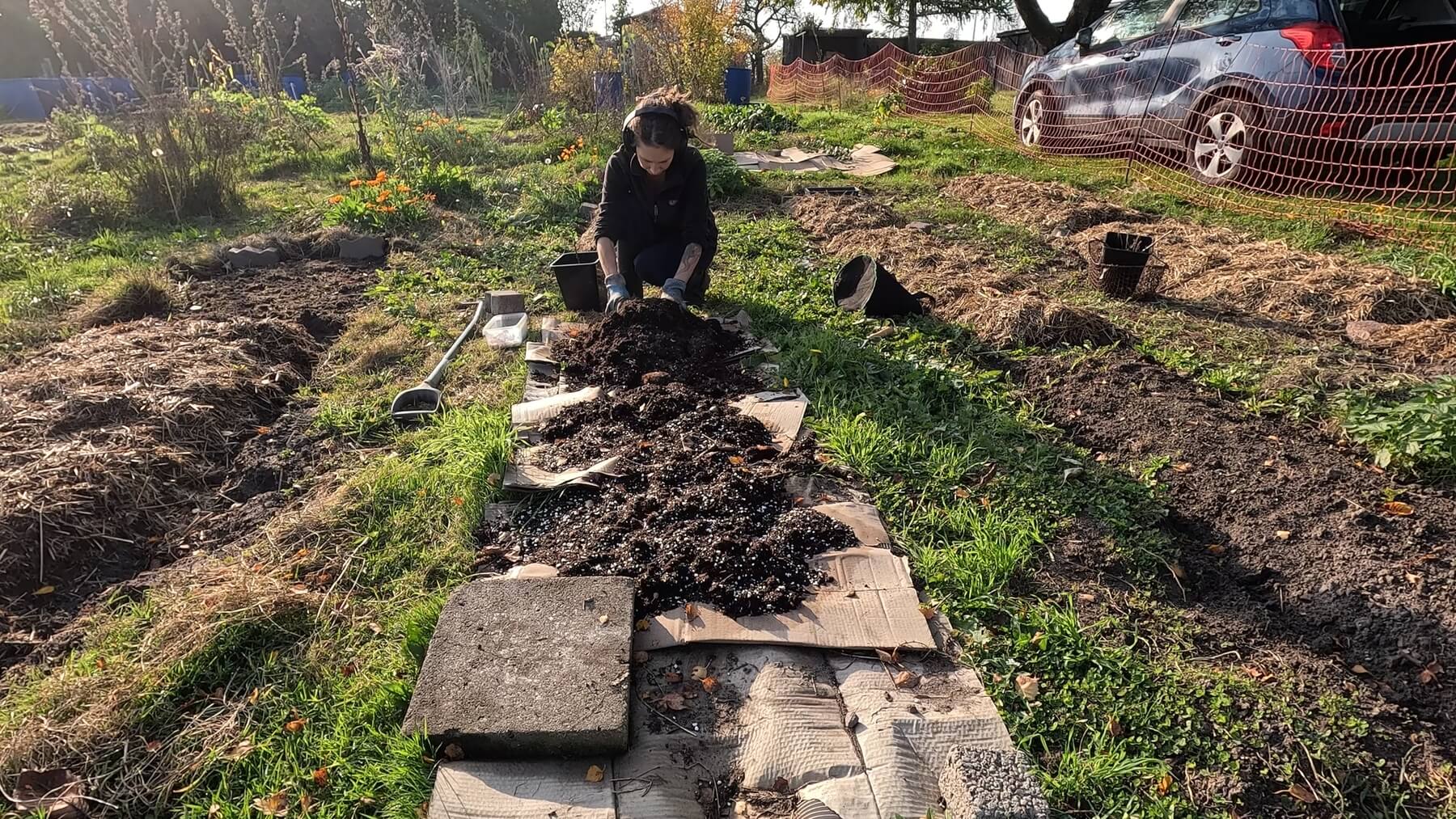
It’s also why this soil isn’t going into the greenhouse. Instead, I’m spreading it here where the pests become food. The soil still had plenty of nutrients (though some are from a liquid fertilizer I’d never use in the garden). We don’t use any synthetic fertilizers in this garden. Indoors, we have much fewer choices, as regenerative growing methods require pest predators.
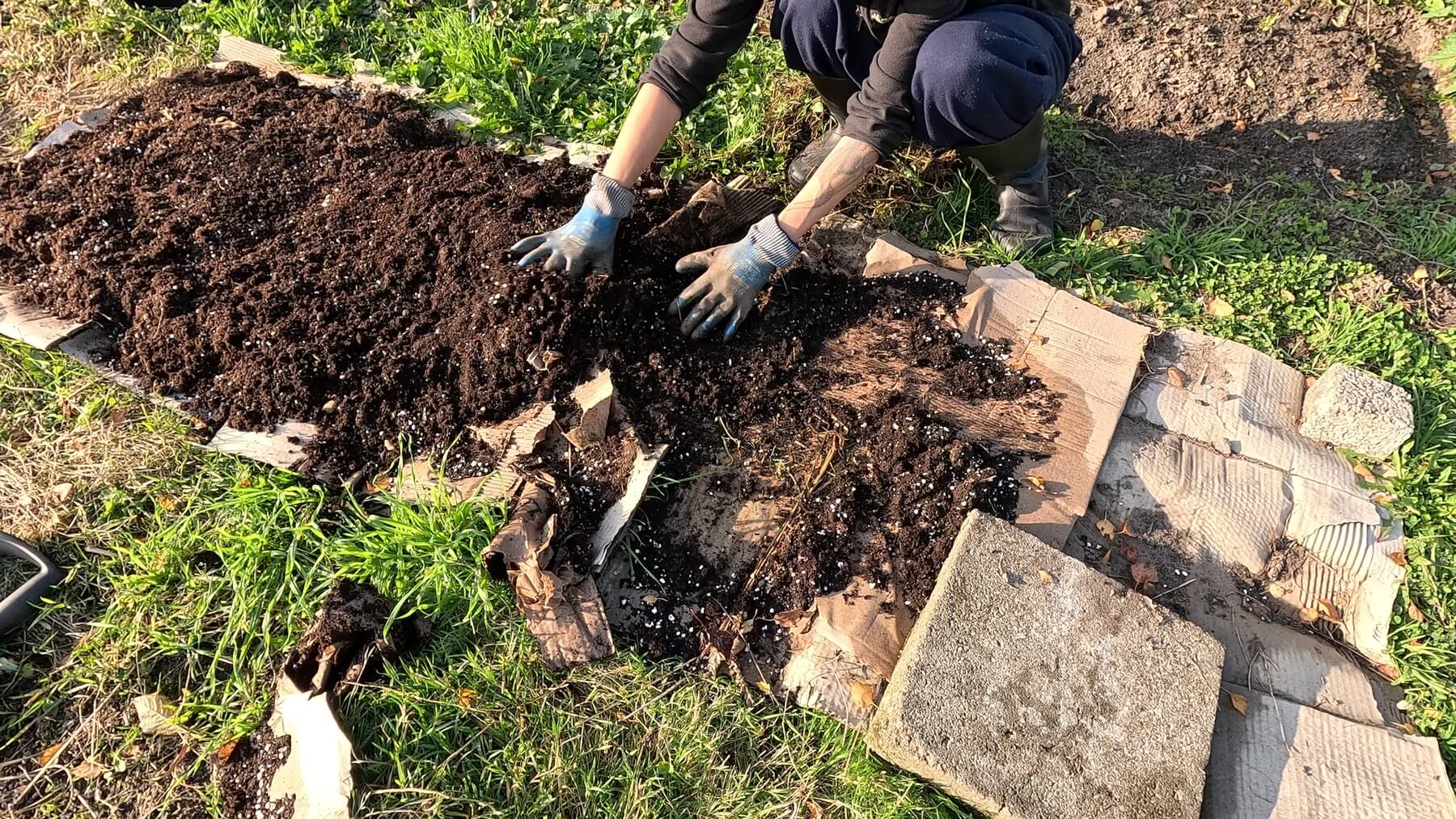
I didn’t have enough soil for a full no-dig bed, so I did what I could, then weeded the rest the normal way. Okay, normal might not be the right word. Let’s call it the Kate way.
To avoid trouble, I still removed the grass from the outer edges of the cardboard. After all, this was my behated grass variety: a rhizomatous grass that loves no-dig beds and spreads rapidly.
We’ve since switched potting mix because we don’t like the ingredients in this one. I messed up there. The white pearls are perlite, an absolutely not natural product. There’s also peat moss in here. I’d specifically filtered for peat-free mixes, but should havechecked they actually were. Lesson learned.
I guess we’ll compare super-charged soil to in-ground Kate-style growing, then.
I’d put cardboard down a while back, and it had started to fall apart. Underneath, the grass was dying.
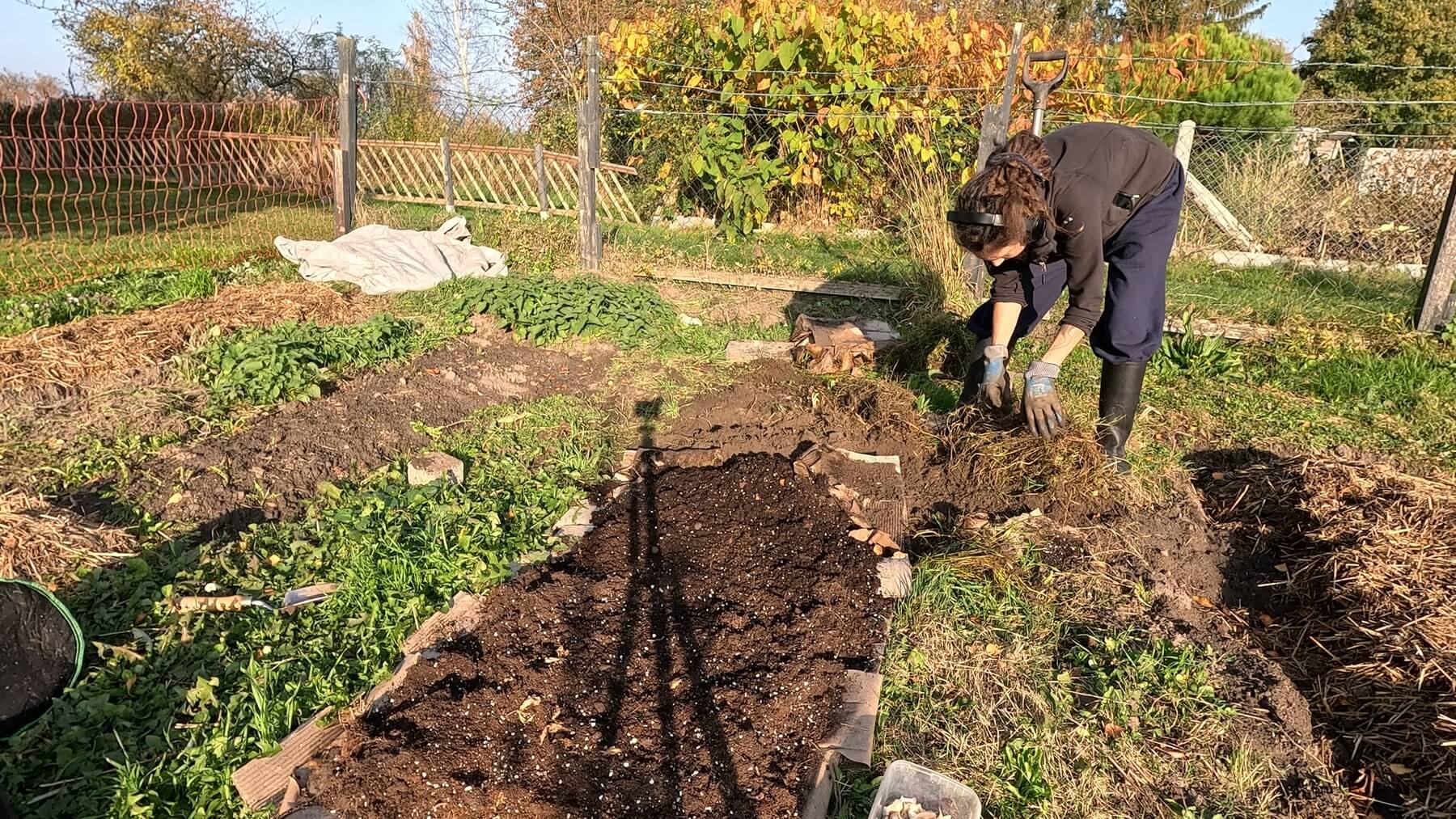
I tend to leave the pathways to their own devices as much as possible. But this grass is hard to control. I have some clover seed for the bare patches, but the rhizomatous grass had to go, so I pulled it generously around the edges of the beds, often into the middle of the paths.
It’s still all over the garden, so I’m not really making a dent. I can only hope to keep it out of the garden beds.
The bed was shorter than I’d planned for. There were stones and rocks all over the rest of the area. Someone must have buried them there or they are left over from a former building.
The garden neighbor between my plots explained that these gardens had been used as inofficial dumping grounds for decades.
Some of the garlic roots will have to grow around rocks. It is what it is.
I planted a mixture of the varieties we had and saved secondary bulbs from our own garlic into both the no-dig and the Kate-style bed. I grabbed the last of the mulch from the former garden neighbor to add on top. The last of the bedding mulch went onto the no-dig bed. I’ll need much more over winter, especially as the first onions have now sprouted because of our warm fall.
Yesterday, when I checked on the garden, some of the bulbs had sprouted. I see green above the mulch. I planted when it go really cold but temperatures warmed up again, and we are now too warm for fall. Hopefully, they won’t die over winter.
Seasons have become unpredictable. Everything’s a gamble now. I’ve seen many plant much sooner than me. I’d even worried I was pushing things. But this is the fluffy version of this video, so we won’t get into climate change either.
Instead, let’s talk about harvesting the carrots. I harvested the two patches of carrots with two varieties in each: Oxhella, a short stubby one, and Treenetaler, a longer thinner, more traditional one.
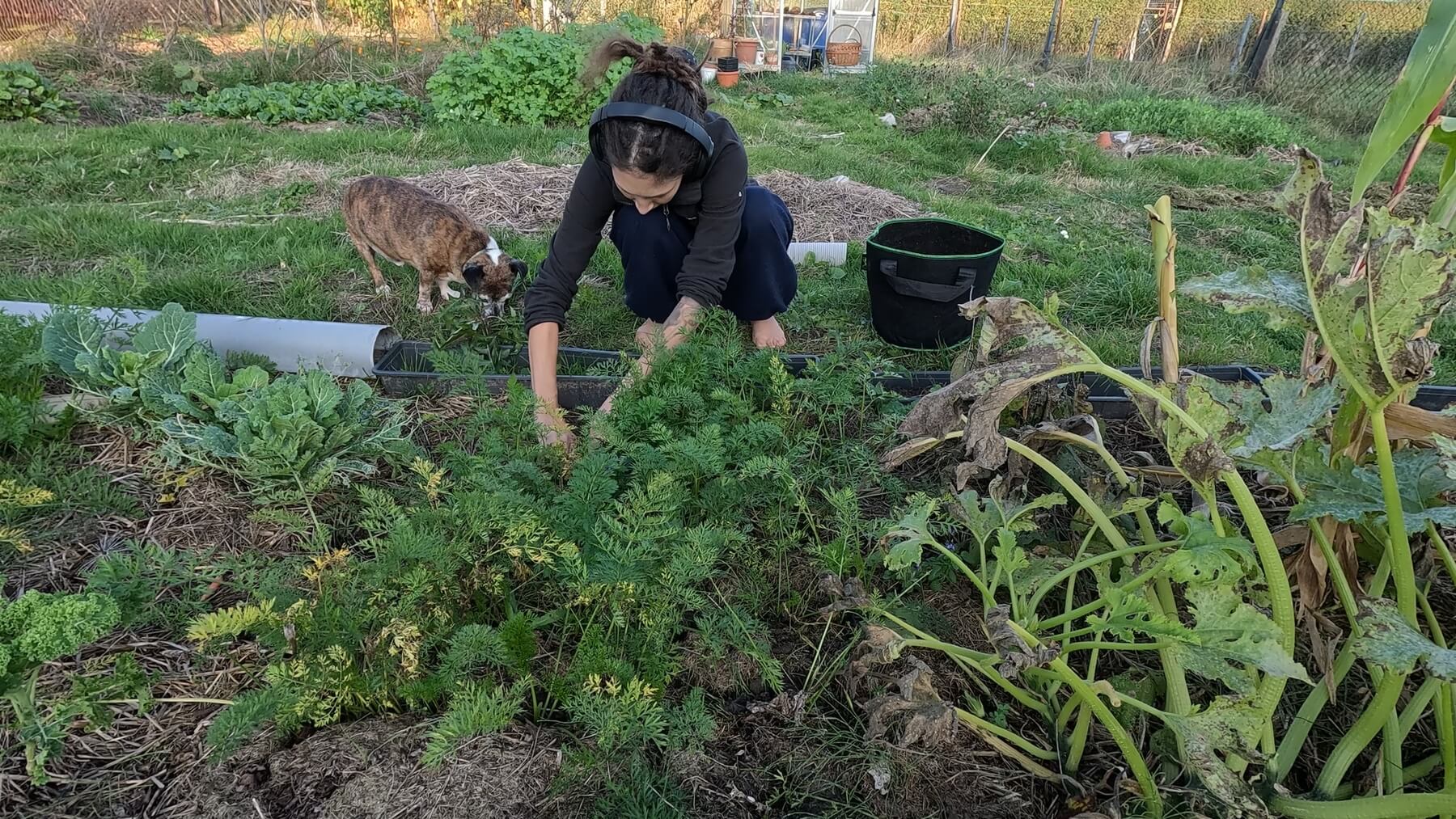
I gave Pepper the first carrot. He seemed to think he deserved a bigger one at first, but then enjoyed the treat. Maybe he saw that the others I pulled were even smaller than his? I showed Pepper his carrot again, rubbed off some more of the dirt, and he finally agreed that he’d gotten his share. I love this stupid little dog a lot.
I’d never thinned the carrots. I’d simply forgotten about them after they came up. Except for some mulch and very, very minor weeding, I left them alone all summer.
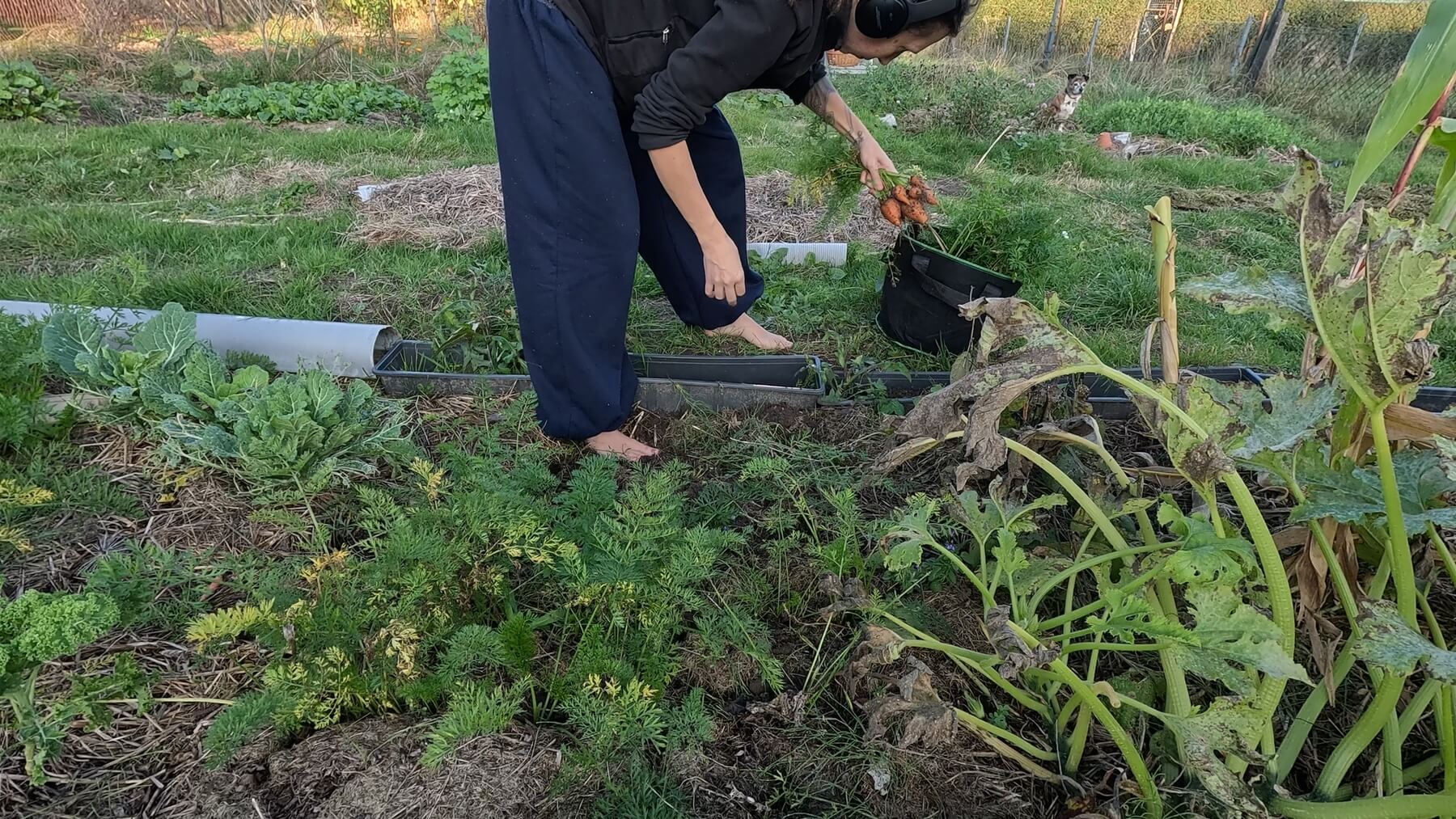
I’d planted two varieties in two patches each. Half of them had gotten chicken and rabbit bedding mulch. The other half only got grass clippings.
It hadn’t been an experiment on purpose. I merely didn’t have enough grass clippings, then got bedding.
The ones grown in grass clippings looked pretty good. I especially like the shorter, stubby Oxhella. They are cute. We did not detect a difference in taste between the two varieties, though.
The carrots growing in rabbit bedding were, on average, much chunkier than those grown in grass clippings. But bedding wasn’t the only difference between the two batches of carrots.
These carrots had gotten more light without the corn blocking most of the sun. They also probably got more water, as they were next to the beans I watered regularly.
At the very least, I now know not to be scared of adding a bit of chicken poop with the rabbit bedding.
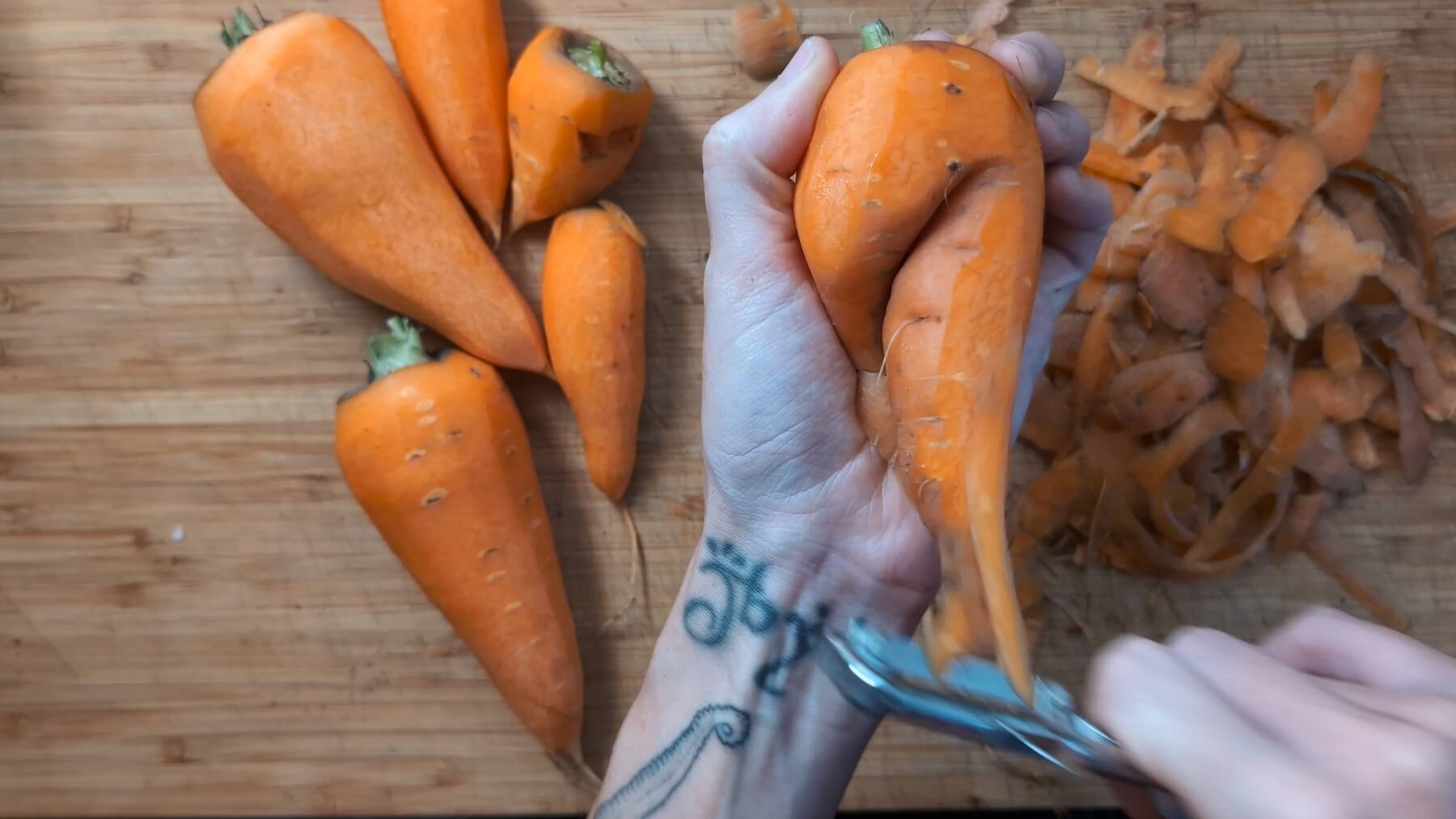
This is my favorite carrot, by the way. It grew two legs that then intertwined.
The Treenetaler, too, were larger on the sunny side of things. But all of that variety had black spots. They hadn’t held up in the ground as well. The Oxhella were in better condition overall.
We decided to let some of the carrots go to seed. But they are right next to each other, so we had to pick one kind. We’ll pick the Oxhella.
I mean, just look at the stubby little cuties…
So long, and thanks for being here.